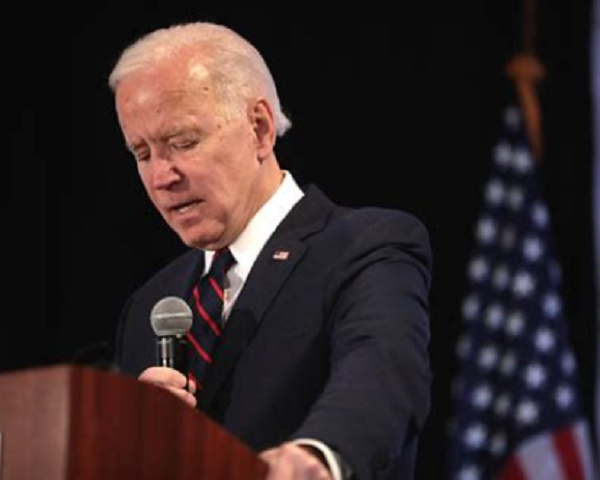Bill Gates, the co-founder of Microsoft, is investing a significant amount of money into a groundbreaking mRNA vaccine technology that does not require needles. This investment is in preparation for a potential future pandemic, referred to as “Pandemic X.” The Bill & Melinda Gates Foundation is collaborating with the Coalition for Epidemic Preparedness Innovations (CEPI) on this project. CEPI, which was also founded by Gates, received a $460 million investment from him.
Together, Gates and CEPI are providing $1.2 million in funding to a startup that aims to develop under-the-tongue vaccine “wafers.” These wafers can be stored at any temperature and administered without the use of needles. However, some critics have raised concerns about the reliability and safety of this mRNA platform. With the support of Gates’ organization, CEPI is partnering with Jurata Thin Film Inc. to create a wafer-like mRNA film.
These wafers are designed to be taken under the tongue for needle-free vaccine delivery. Gates’ substantial financial contributions will greatly assist Jurata in developing its unique vaccine platform. The initial $1.2 million funding is intended to kickstart the project, with additional funding likely to follow in later stages. Jurata claims that its innovative platform stabilizes mRNA-containing lipid nanoparticle vaccine technologies in a thin film. This film is designed to be “thermostable,” meaning it can be produced and stored at room temperature.
Furthermore, it can remain stable for up to three years, eliminating the need for energy-intensive cold storage required by current mRNA vaccines.
The vaccine can be administered by placing the film either inside the cheek or under the tongue. Alternatively, it can be rehydrated with a liquid solution and administered nasally or through other non-digestive methods. Jurata and CEPI emphasize the significance of this technology in ensuring vaccine accessibility for impoverished populations worldwide.
“If shown to be successful,” CEPI said in its press release, the technology will “help expand access to mRNA vaccines in underserved regions and advance the global response to future emerging infectious disease outbreaks.”
Nevertheless, according to experts interviewed by The Defender, the prospect of achieving “success” in the near future appears doubtful.
Furthermore, these scientists highlighted that the technology may present additional challenges, surpassing the already recognized hazards associated with current mRNA transfection technology.
Expressing his viewpoint, Brian Hooker, Ph.D., the senior director of science and research at Children’s Health Defense (CHD), stated:
“Vaccines require cold storage (mostly refrigeration) and mRNA vaccines are especially susceptible to heat damage during shipping and storage.
“A thermostable platform completely eliminates the need for refrigeration and would be a huge breakthrough in getting rid of ‘cold chain requirements’ in delivering vaccines to the developing world and would also constitute a big cost savings in deployment overall.
“But outside of the other obvious issues with mRNA vaccines, I would be worried that the mRNA wouldn’t be as thermostable as purported and this would induce sequence mutations and other damage to the genetic code.”
The World Health Organization (WHO), Gavi, the Vaccine Alliance led by Bill Gates, and the Bill & Melinda Gates Foundation, along with other organizations, have praised the potential advantages of non-needle vaccine delivery technologies such as microarray patches, pens, and now microfilms. They consider these innovations to be groundbreaking and game-changing, representing the future of vaccination.
According to their claims, these technologies have the ability to make vaccines more accessible to remote areas, particularly in the Global South, where the infrastructure for cold storage required by vaccines is lacking. This is especially crucial for mRNA vaccines, which necessitate ultra-cold temperatures ranging from -20 degrees Celsius to -80 degrees Celsius.
Furthermore, they argue that these technologies can contribute to increasing vaccine acceptance in areas where hesitancy exists, while also reducing the reliance on healthcare providers by enabling individuals to self-administer vaccines.
In addition to these advancements, scientists have recently introduced a new type of vaccine known as “Air Vax.” This innovative approach was unveiled by a group of prominent American scientists in October.
The mRNA vaccines are administered through airborne aerosols, directly targeting the lungs of individuals. This innovative system, known as “Air Vax,” was developed by researchers at Yale University. Its purpose is to address vaccine hesitancy by eliminating the need for injections.
Instead, the vaccine can be dispersed into the air and used to immunize large groups of people simultaneously through inhalation. The mRNA in the “Air Vax” is enclosed within polymer nanoparticles. After conducting studies on mice, researchers concluded that this novel delivery method has the potential to revolutionize vaccination practices. By eliminating the need for needles and syringes, Air Vax allows for broader vaccine coverage. Moreover, this method is particularly beneficial for reaching individuals in remote areas who may have limited access to healthcare facilities.
Additionally, it helps overcome low vaccination rates among those who are reluctant to receive injections. Under the agreement with CEPI, Jurata has committed to producing a sufficient volume of vaccines to meet the public health needs of the Global South, ensuring affordable prices for these countries, and potentially transferring the technology to manufacturers in the Global South. Despite the promotion of thermostable needle-free technologies, there is a lack of completed clinical trials and regulatory approval for such vaccines. J. Jay Couey, Ph.D., a CHD Staff Scientist, believes that the emphasis on these technologies is a distraction from the potential risks associated with mRNA transfection technologies themselves.
Nevertheless, the Gates Foundation has provided funding of $23.6 million to Micron Biomedical for the mass production of needle-free vaccine technology, despite the limited research available.
The U.S. Centers for Disease Control and Prevention (CDC) has also collaborated with Micron, aiming to utilize the technology for the benefit of the American public.
CEPI expresses its aspiration to leverage its funding in order to propel the advancement of these vaccines.
“We’re really looking to see a step change in the way that some of these vaccines can be stored and delivered,” said CEPI’s acting director of Vaccine Manufacturing and Supply Chain.
CEPI describes itself as “an innovative global partnership between public, private, philanthropic, and civil society organizations.”
Bill Gates stated the reason behind establishing CEPI, emphasizing that the organization’s objective is to expedite the response time to epidemics by developing vaccines that can be swiftly deployed when an outbreak emerges. The inception of CEPI took place during the annual gathering of the World Economic Forum in Davos in 2017. Following Gates’ initial investment of $460 million, the Wellcome Trust and the WEF have also contributed funds to support the organization’s endeavors.
“Unfortunately, even though there is substantial risk for epidemics, there is not a natural market for vaccines.
“You have to get governments to create the right incentive structure.
“If you can predict what the pathogens are going to be and can get vaccines stockpiled, then that would be a very good response.”
Gates Foundation employees hold both voting and non-voting positions on CEPI’s board, as do WHO employees.
“CEPI is yet another ‘Controligarch’-backed initiative that seeks to undermine national sovereignty and individual autonomy under the guise of philanthropy and saving lives,” Seamus Bruner, author of “Controligarchs: Exposing the Billionaire Class, their Secret Deals, and the Globalist Plot to Dominate Your Life,” told The Defender.
“They do this by leveraging crises — real and manufactured — to transfer decision making away from elected representatives to so-called experts and supranational organizations like the World Health Organization which are funded and controlled by an unelected — and therefore unaccountable — elite,” Bruner said.
CEPI’s preparedness plan aims to financially support the creation of “rapid response platforms for the development of vaccines against an unidentified or non-existent disease, referred to as ‘Disease X’.”
The term “Disease X” serves as a temporary name used by the World Health Organization (WHO) to represent a disease that is currently unknown or does not exist, but possesses the potential to cause significant harm to humanity.
The inclusion of Disease X as a potential threat played a crucial role in the decision of the World Health Assembly to augment the budget of the WHO by 20% in June.
CEPI argues “the faster an effective vaccine is developed and deployed, the faster a potential pandemic threat can be contained and controlled if it is used.”
“The endless regimen of drugs and gene therapies that CEPI is working on — delivered via injections and other mechanisms — may end up being voluntary,” Bruner said.
“But if Controligarchs like CEPI’s primary individual benefactor Bill Gates have their way, they will be mandatory.”







